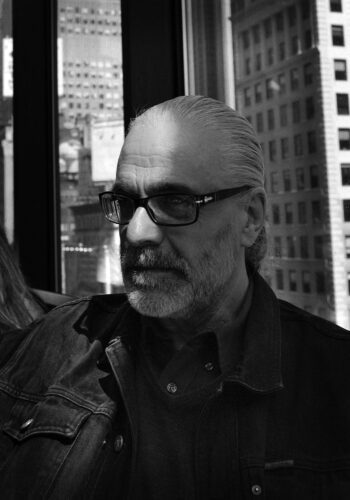
The Dark Carnival: Portraits From The Endless Night is the newest hardbound collection of black and white photographs by British photographer Derek Ridgers. What’s become his life’s work, somewhat by accident, has evolved into an elegant compulsion. Ridgers’s dark beautiful photographs depict the mad jubilee of counterculture nightlife that has occupied the London club scene since 1976. While sealing professional fame shooting musicians and bands out in the open, Ridgers found himself in the dimly lit clubs, comfortable with the uncomfortable. For years, his career shined with amazing shots of James Brown, Vivienne Westwood, and Keith Richards, but his camera also clicked with the underground scene on the streets and in the clubs. Photographing subcultures normally overlooked, and practically shunned, Ridgers gathered years of images of UK youth culture and style come and gone. Many of the photos are anthologized in his books, Skinheads: 1979 – 1984 and 78-87 London Youth.
Inside the nightclub corners and hallways, Ridgers became fixed with creating portraits of women and men flapping their wings, showing off their flamboyance and look. The dirty black box room, the sensuous, indulgent adventure—The Dark Carnival is a trip through the intimate and savage London underground. It’s a seminal carousel of leathered heathens, fishnet, ebony eyeliner, party girls and boys, rubber dresses, and of course, plenty of cocktails and cigarettes.
***
The Rumpus: You started shooting these photos in 1976. How old were you and what compelled you to want to photograph in nightclubs?
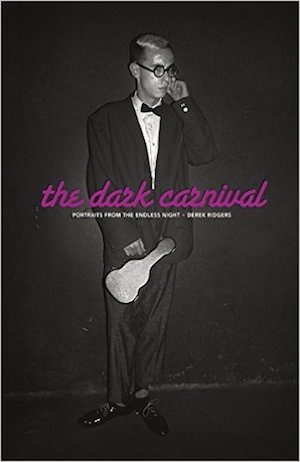 Derek Ridgers: I was twenty-three or twenty-four before I even owned my own camera and it wasn’t until 1978, when I was twenty-seven that I started to take myself even remotely seriously as a photographer. My work was very patchy until about 1982, when I left work and took up photography full time.
Derek Ridgers: I was twenty-three or twenty-four before I even owned my own camera and it wasn’t until 1978, when I was twenty-seven that I started to take myself even remotely seriously as a photographer. My work was very patchy until about 1982, when I left work and took up photography full time.
I started out, in the mid-’70s, taking photographs of rock bands that I liked but not because I really wanted to photograph them. Initially, I was pretending to be a photographer, simply so that I could go up to the front of the crowd and be a bit closer to the bands. But, I found I was gradually developing an interest in the photos I took.
By 1976, the crowd had started to get a lot more photogenic than some of the bands and so I swung my lens away from the stage. That is what led directly to me turning up at the first night of the London punk club, The Roxy, and that is when this project started.
Rumpus: What shape were your own social values in when you started shooting the photographs that ended up in this book? Did they change? Did you?
Ridgers: When I began this long project (although, it didn’t start life as a project) I had little money, a young family and we were living on a council estate in a bad area. Almost as soon as I started taking photographs seriously I was successful. My very first set of photographs were exhibited at the ICA and published in the prestigious international photo magazine Zoom.
When I gave up my office job and became a full-time professional photographer, my fortunes certainly improved markedly. We moved away from the council estate into our own house and for the first time in my life, I had a little spare money.
When I started, I was a Labour Party activist living in a Labour area. That also changed. We moved to, and still live in, an area the Labour Party has no foothold in. As a photographer, I was flying around the world taking photographs of rock stars all the time and so my social life changed a lot. I no longer socialized with the people I worked with, as I had done in the ad business. I suppose the nightclubs became my ersatz social life. Throughout the ’80s, I stayed in the Labour Party, but I didn’t have much time left for activism.
Yes, I did change. I went from being an underpaid ad man to quite a successful photographer in a very short time. Success breeds confidence and as soon as I got properly confident, I developed my own style. After that I never looked back.
Rumpus: Were you personally influenced by the various subcultures you saw rise and fall?
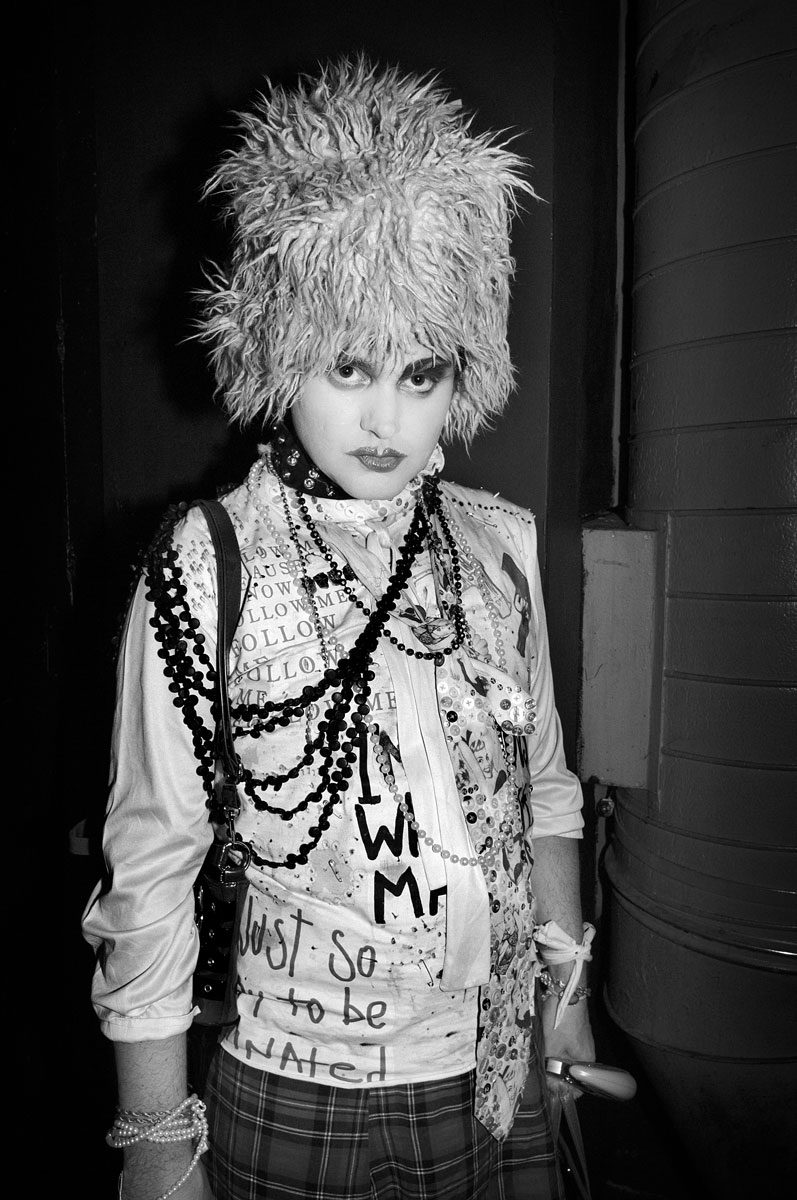 Ridgers: Yes, of course. As Bob Dylan once said, “Open your eyes and your ears and you’re influenced.” When I was a teenager in the ’60s, I was, by turn, interested in and influenced by whatever youth trend was most current. Teddy boys, mods, skinheads, hippies. I toyed with them all to some small extent. By the time I got to art school at the age of sixteen in 1967, I was a cross between a skinhead and a hippy. I may well have been the only skinhead/hippy combination that there ever was.
Ridgers: Yes, of course. As Bob Dylan once said, “Open your eyes and your ears and you’re influenced.” When I was a teenager in the ’60s, I was, by turn, interested in and influenced by whatever youth trend was most current. Teddy boys, mods, skinheads, hippies. I toyed with them all to some small extent. By the time I got to art school at the age of sixteen in 1967, I was a cross between a skinhead and a hippy. I may well have been the only skinhead/hippy combination that there ever was.
Throughout my teen years, my friends and I were always scared of being caught out on our own and being beaten up by a gang. A gang of bikers or a gang of skinheads. It never happened and it didn’t happen to anyone I knew either. I guess these things did happen, but they weren’t happening to us.
Once I became a photographer, it stopped me being scared or intimidated by gangs of young men of whatever stripe. Initially, I could hide behind my camera but eventually I came to realize that if I was polite and friendly to them, then they probably would be to me too—a good life lesson.
Rumpus: Of all the amazing styles and subcultures that emerged in London—punks, teddys, skinheads, new romantics—did one group in particular hook you to this compulsion to seek them out to photograph?
Ridgers: It all started with a few punks at a gig in Kingston Poly. Or going back a year or two on that even, when I stopped off and photographed some Bay City Rollers fans in Hammersmith. They were so eager and that eagerness was in itself photogenic. The Bay City Rollers fans hooked me, the punks reeled me in, and I’ve remained hooked on recording youth culture ever since.
Rumpus: The Dark Carnival photographs are both social documentary and portraiture, because you asked your subjects to be photographed. Why did you decide to break that wall, as opposed to typical candid doc style shooting?
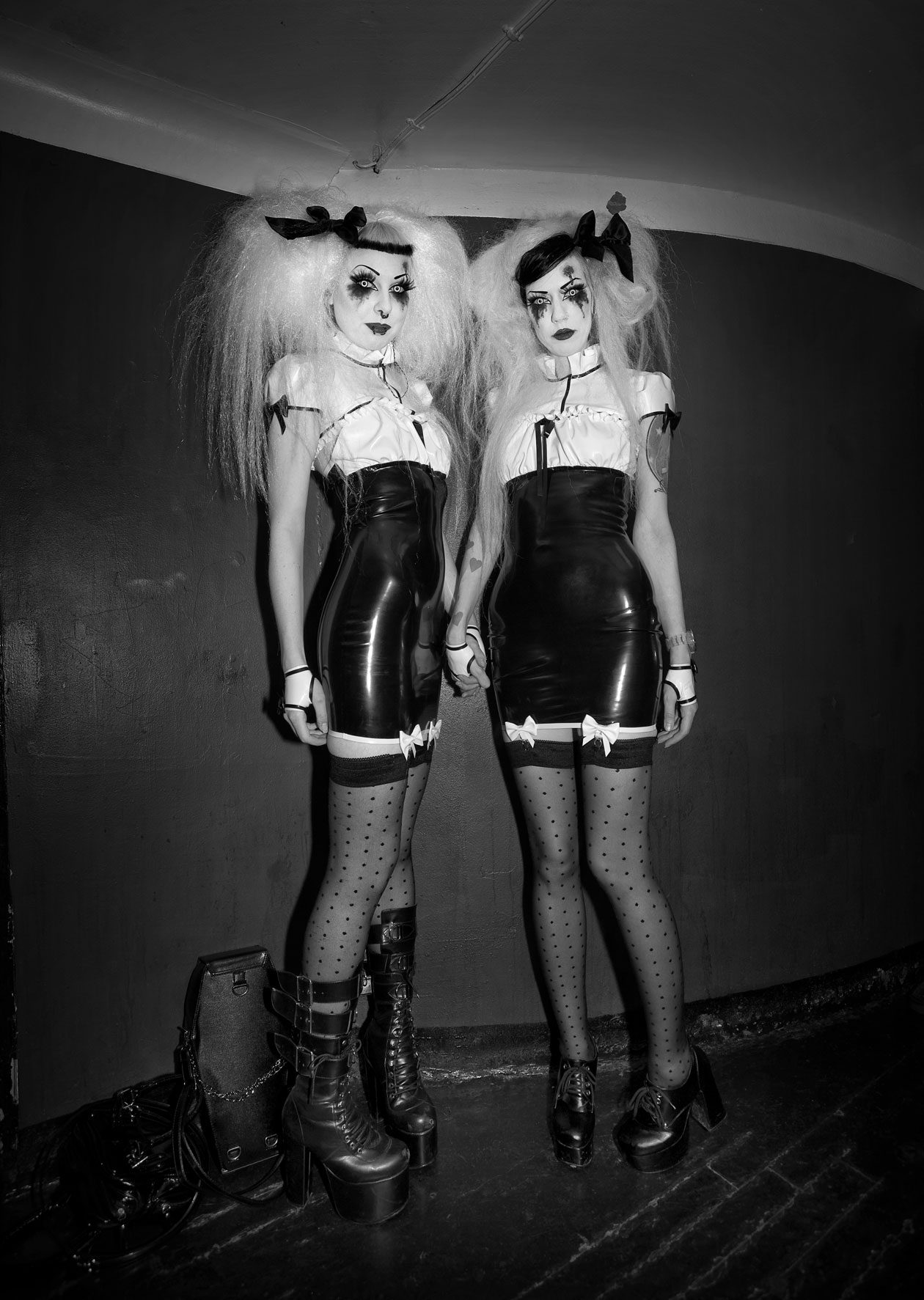 Ridgers: When I started it was simply a matter of expediency and being polite. I didn’t really have the balls to shoot away and expect people not to mind if I didn’t ask nicely first. Very quickly I saw that I preferred that option, where my camera (and by proxy, me) could look them straight in the eye. The way they reacted to me was always interesting. Sometimes hard young men would reveal vulnerability and a softer side. In the case of teenage girls, I often got a fascinating glimpse of the woman inside.
Ridgers: When I started it was simply a matter of expediency and being polite. I didn’t really have the balls to shoot away and expect people not to mind if I didn’t ask nicely first. Very quickly I saw that I preferred that option, where my camera (and by proxy, me) could look them straight in the eye. The way they reacted to me was always interesting. Sometimes hard young men would reveal vulnerability and a softer side. In the case of teenage girls, I often got a fascinating glimpse of the woman inside.
That’s one of the wonderful things about the whole process of photography—eye contact can be very revealing.
Rumpus: Why do you think people back then wanted to be photographed, knowing that a photo could be seen everywhere, while their scene may have been so intimate to them? The selfie wasn’t a popular concept yet.
Ridgers: They were young, they had something to say, a personality to assert, and they wanted to be seen. In the case of the new romantic crowd known as the Blitz Kids, the cameras and the publicity generated by people like me gave some of them whole careers. Or at least, gave them a decent leg up. So the Blitz Kids had an ulterior motive.
In the case of the skinheads or the teddy boys, it’s harder to understand. But I think most people are self-obsessed, it just manifests itself in different ways.
In the age of social media, you have the selfie and some people—not always young people—seem obsessed with showing the world what their face looks like almost every day. Just like some people are obsessed with showing the world what their dinner looks like. It’s beyond my understanding to be honest.
Rumpus: During the early years, was this scene uncomfortable or controversial for you to shoot in?
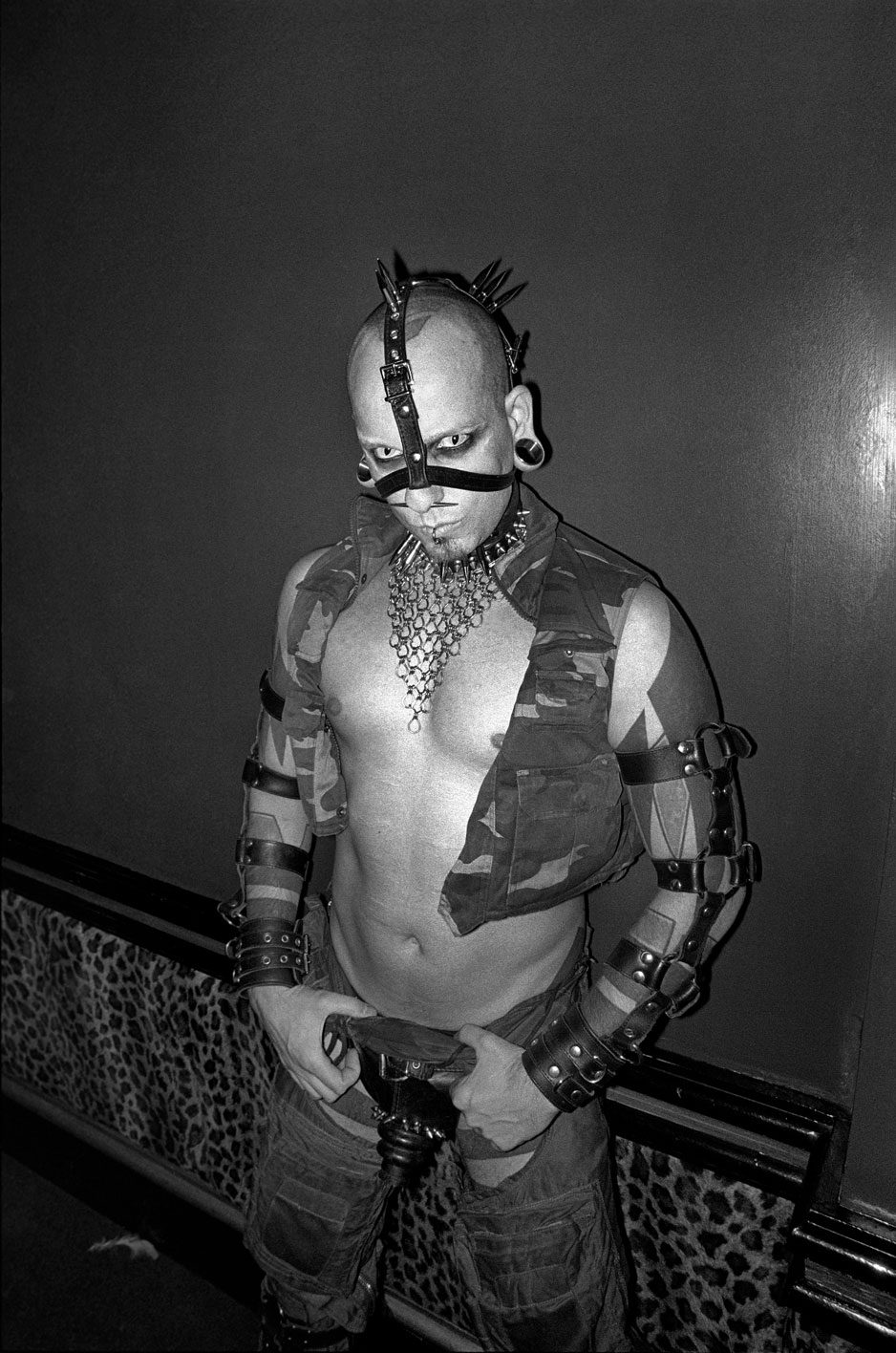 Ridgers: There was only really one place that was difficult and that was the original Skin Two club in Falconberg Court, back in 1983. It was the first London fetish club in the modern era and the early clientele were mostly hardcore rubber enthusiasts, including some of those people interested in ‘rainwear,’ and rumour would have it, the odd MP in disguise.
Ridgers: There was only really one place that was difficult and that was the original Skin Two club in Falconberg Court, back in 1983. It was the first London fetish club in the modern era and the early clientele were mostly hardcore rubber enthusiasts, including some of those people interested in ‘rainwear,’ and rumour would have it, the odd MP in disguise.
I was quite clearly an outsider as I was just dressed normally, if I remember correctly, in jeans and a bomber jacket. I was threatened with violence a few times and once a guy grabbed me around the neck. I also got manhandled (if that is the correct term?) by a couple of dominatrixes. I’m not quite sure what kind of retribution they had in mind for me. I didn’t hang around to find out. I wriggled free and ran off.
But I’m very persistent and I wore the clientele at Skin Two down so that pretty soon I was the only photographer they’d allow in. Anyway, the fetish crowd, compared to some of the people that hung out with the skinheads, was all pussycats.
Rumpus: How do you think the London nightclub subculture you’ve been photographing has changed over the past four decades?
Ridgers: Things are very different now because a lot of those little clubs don’t exist. In Soho for instance, where nearly half my nightlife photographs were taken, it’s rapidly changing. There isn’t the same after dark frisson of excitement about the place any more.
These days it’s more about subtracting every single buck from the tourists that still flock there. Gentrification and the need for developers to maximize their profits from every square inch of the place means that there just aren’t any scruffy little basement clubs left. Those scruffy little basement clubs were the areas lifeblood. Now, it’s all penthouse flats and global brands. They destroyed the very thing that drew people there in the first place—it’s superficial sleaziness.
Rumpus: You talked about visiting these clubs to shoot the “peacocks” and show-offs because you could never be them yourself, but maybe secretly, you wanted to.
Ridgers: When I was fifteen or sixteen, via financing mostly provided by my grandmother, I was able to be quite fashionable for about five minutes. It wasn’t something I liked. I felt very uncomfortable walking down Hounslow High Street and being stared at by people I didn’t know. From that point onwards, I realized that I was always destined to be more the observer than the observed.
But, being an only child of parents that were not particularly social themselves, I guess I was always destined to be a bit of a loner. On the outside, looking in. Wishing I could be a part of the group and to fit in. All kids want that, I think. As I grew older, I realized that my outsider position could give and be a perspective on other outsiders. Maybe I was always destined to pick up a camera.
Rumpus: How are you, as the artist, so different than the subject, in this sense?
Ridgers: I’m not really, but I suppose it’s just what one is comfortable with. My parents, though very loving, were not what one would ever describe as outgoing and therefore when I was young I was quite shy and socially awkward. Having a camera changed all that. It gave me an excuse to go anywhere and approach anybody.
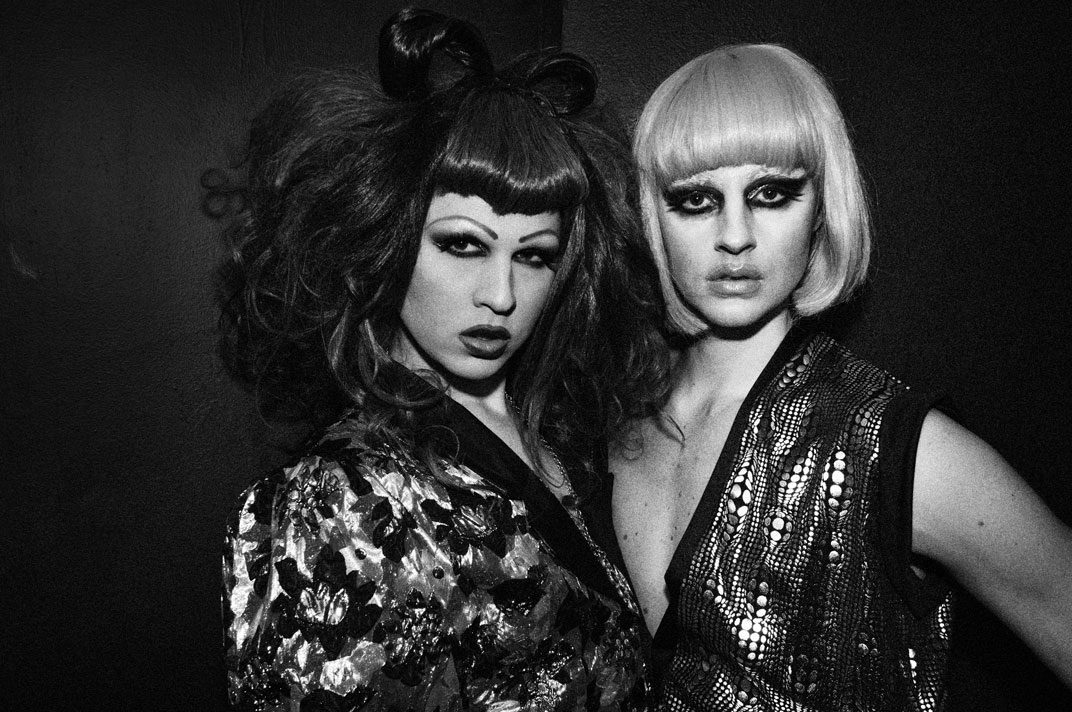 Rumpus: Why is the counterculture important to document?
Rumpus: Why is the counterculture important to document?
Ridgers: I never really saw this as counterculture before now. But technically, I guess you’re right. To me, the counterculture was always what I grew up with the hippies in the late ’60s. But, however you define it, it’s really the excesses of youth and it’s something that everyone goes through to some extent. Or if they don’t, they should do.
Only a very small proportion of us take those excesses with us into later life. In the age before everyone had a camera, it was worthwhile, in my opinion, to record those excesses. Sometimes, many times actually, the young people I photographed were only dressed that way for one night; that one night that they got snapped by me.
Earlier this year, I made contact with a woman that I have one single frame of from 1977. I hadn’t seen or communicated with her at all in the intervening time. She was able to recall the night I photographed her and she sent me a photo that she had of herself wearing the same outfit earlier in the day. I have Facebook to thank for that reconnection.
Rumpus: How has counterculture photography evolved with the Internet and advent of digital photography?
Ridgers: Nowadays everyone has a camera and the Internet means everything is instantly accessible. Unlike some photographers, I don’t see this as a problem. If anything interesting happens in the world today, there will be someone around to record it.
The big downside to the global village that the Internet has created is that nothing has time to grow out of the public gaze and, even more dangerous, whatever your personal interests might be, there will always be someone somewhere to provide validation and encouragement.
Rumpus: Are there any counterculture photographers who inspired you early in your career?
Ridgers: When I was starting, I was very much influenced by the straight up, eyes to camera style of August Sander. He is really the only one. Had I known then the work of people like Ken Russell, Vivian Maier, Helen Levitt, and Steven Berkoff, they would undoubtedly have influenced me too.
Hoppy (John “Hoppy” Hopkins) was a huge influence but, although he’d been a photographer, I didn’t find that out until more or less thirty years after he stopped taking photographs. Hoppy influenced my life, not my photography. Without Hoppy, it’s debatable whether there would have been a sixties, as we now know it. He was a big part of the growth of what became known in the UK as the ‘Swinging Sixties.’ Without the ‘Swinging Sixties’ happening at such a key time in my life, I would have been a very different person.
Rumpus: What kind of camera did you mainly shoot with for the photographs in The Dark Carnival?
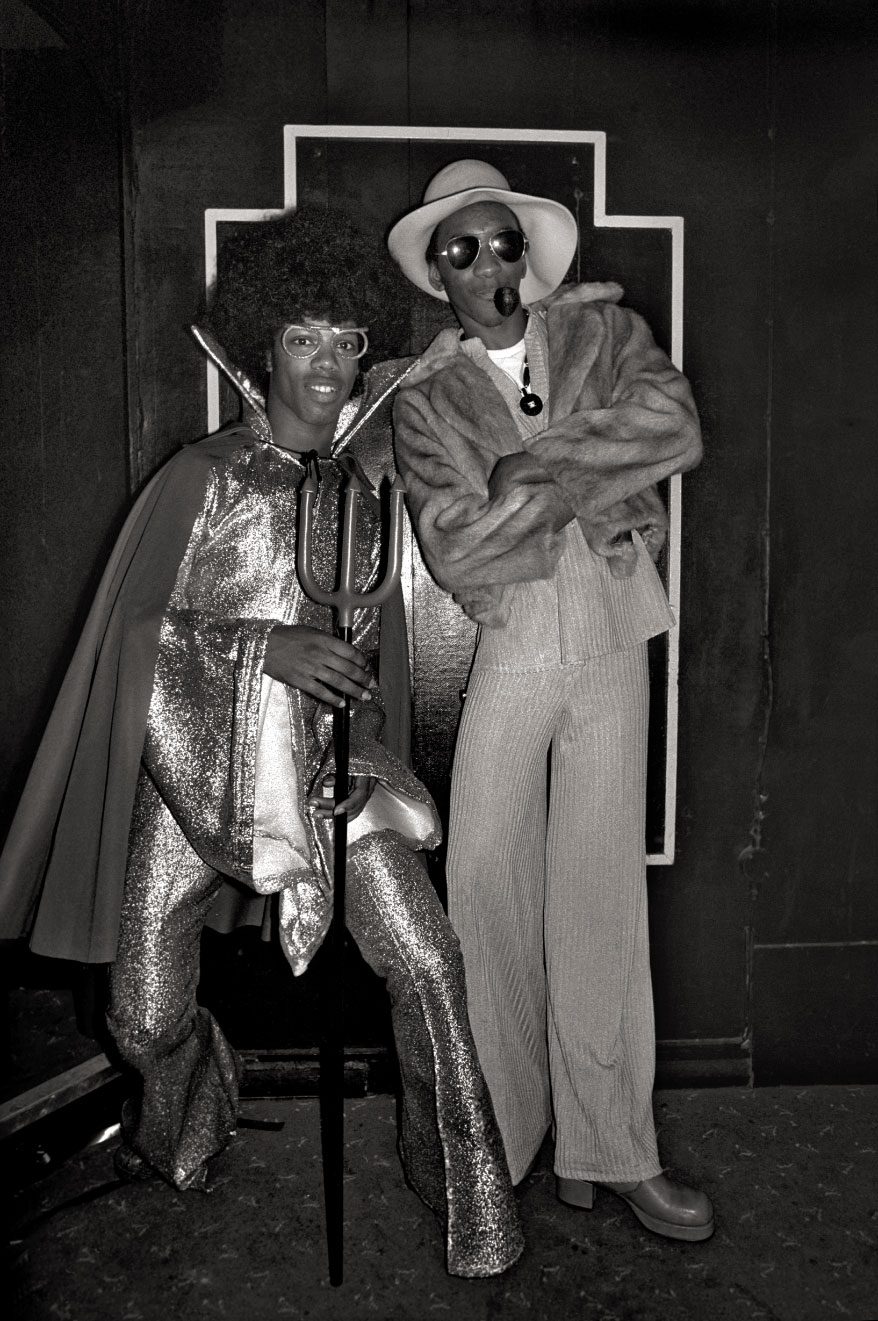 Ridgers: Over forty years, the cameras I’ve used have changed enormously. But they would almost always be a fairly simple, non-professional Nikons. I started with a secondhand Nikkormat. For much of the ‘80s and ‘90s I was using a Nikon FM and I ended the period covered by this book using a Nikon 800D.
Ridgers: Over forty years, the cameras I’ve used have changed enormously. But they would almost always be a fairly simple, non-professional Nikons. I started with a secondhand Nikkormat. For much of the ‘80s and ‘90s I was using a Nikon FM and I ended the period covered by this book using a Nikon 800D.
More interesting, perhaps, was the flashgun I used. For the first thirty years it was a tiny unit mounted upside down on a bent coat hanger. It was so weak that anything beyond about eight feet was hardly illuminated at all and that was exactly what I wanted. I always printed my photographs quite dark and, in some of the shots, it’s hard to tell that a flash was used at all.
Rumpus: Many of these photos are staged in corners or doorways, what were the challenges of shooting in nightclubs?
Ridgers: The most obvious ones, really. Many nightclubs from this era were very loud and very dark. Plus some of the best ones were incredibly crowded. To begin with, I could seldom get back far enough to get people into frame from head to foot and when I could, people would be constantly walking in front of me all the time. Then I bought a 24-mm lens and only had to be four or five feet away.
The reason why so many of my photographs in the book were taken in stairwells and corridors was that that was the only bit of spare space available and, in some cases, the only place where there was enough light to see anything. Even then, it was often so dark that I couldn’t tell which gender my subject was (not that I particularly cared) and too dark, before the era of autofocus, to focus. I had to find a light (or carry a torch) and pre-focus.
Rumpus: Is there one image that captures the essence of the title, The Dark Carnival?
Ridgers: I don’t think there is one. I know that answer seems crazy but the book was designed to be an entity. Almost like one long night with one long, continuous procession of interesting characters, just like a real life carnival.
***
All photographs © Derek Ridgers.




